 EMAIL
EMAIL


With the continuous in-depth development of smart homes, vacuum cleaners and sweeping robots have gradually become popular. At present, the development of vacuum cleaners and sweeping robots has been transformed from functional to intelligent. From basic cleaning functions to the improvement of cleaning efficiency and cleaning quality, cleaning planning products have become the industry standard, and the user experience has been significantly improved. Focusing on the improvement of sensors and algorithms, cleaning planning products have once again detonated the robot sweeping market, making the vacuum cleaner and sweeping robot market enter a new era of intelligence.
The key to realize the intelligentization of vacuum cleaners/sweeping robots lies in sensors. The built-in dust sensor can intelligently identify the pollution degree of ground dust or garbage, help the equipment automatically adjust the fan speed and realize intelligent control.
Vacuum cleaner: The dust sensor is installed in its pipeline (as shown in the figure below), which can feed back the detected dust concentration in real time. The equipment judges and adjusts the fan speed according to the detected data until the floor is cleaned. At the same time, the whole cleaning process is real-time The feedback data will also be simultaneously displayed on the LCD screen for consumers to see intuitively, which not only improves cleaning efficiency, but also improves user experience.
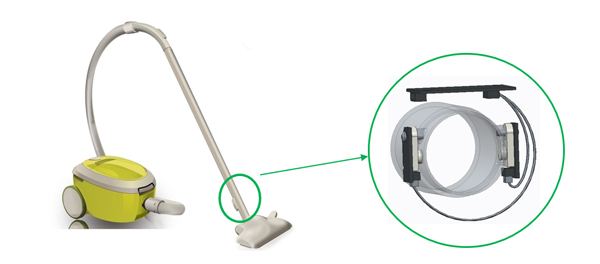
Sweeping robot: The dust sensor is installed on the side wall of the sweeping robot (as shown in the figure below), which can automatically formulate a cleaning action route according to the degree of dirt on the ground detected in real time to avoid repeated work in the same area.
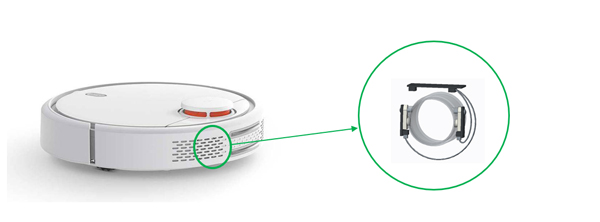
1. Can the degree of dust pollution be quickly identified?
The speed of dust particles passing through the pipe of the vacuum cleaner/sweeping robot varies with the power of the motor. The higher the gear, the faster the speed. If the sensor cannot complete the detection quickly and accurately. When there is a lag, the device will make a wrong judgment and cause consumption. The user experience declines.
2. Whether it can effectively identify the degree of pollution of sewage
The vacuum cleaner/sweeping robot needs to judge whether the ground has been cleaned by judging the degree of sewage passing through the pipeline. This requires the sensor to have the ability to recognize sewage to help the device to automatically adjust the fan speed.
3. Can accurate detection be achieved in a dust-contaminated environment?
As the vacuum cleaner/sweeping robot is working, the infrared light source of the sensor and the detector will inevitably be in contact with dust particles for a long time. It is a huge challenge to ensure that the sensor's photosensitive area is not polluted by dust accumulation and the detection error exceeds the standard.
4. Able to provide a flexible installation plan
The dust sensor adopts the principle of optical opposite beam, and its launch tube and receiver need to be installed at both ends of the vacuum cleaner/sweeping robot pipe. The sensor needs a more flexible structure design to meet the installation requirements of various specifications and styles of equipment on the market.
Cubic dust sensor PM1009 is specially developed for dust removal equipment such as sweeping robots/vacuum cleaners. It solves the main technical problems of dust response speed, sewage identification, long-term dust accumulation and installation structure. It is currently on sale in batches.
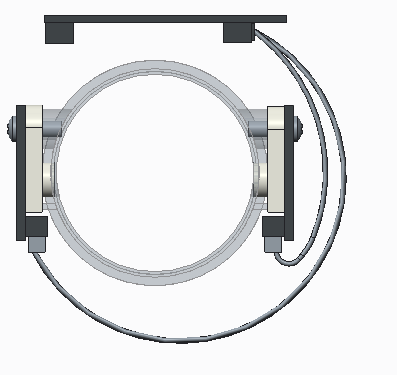
1. Fast response speed, <200MS
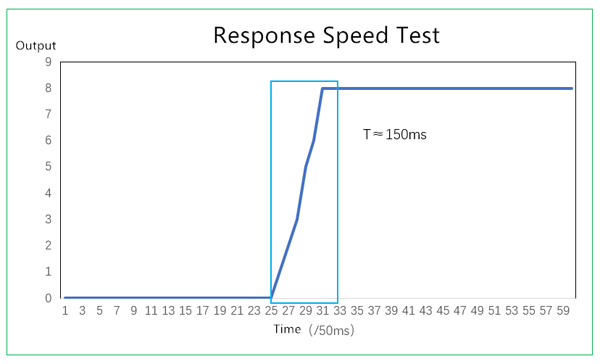
2. It can accurately identify the degree of dirty sewage.
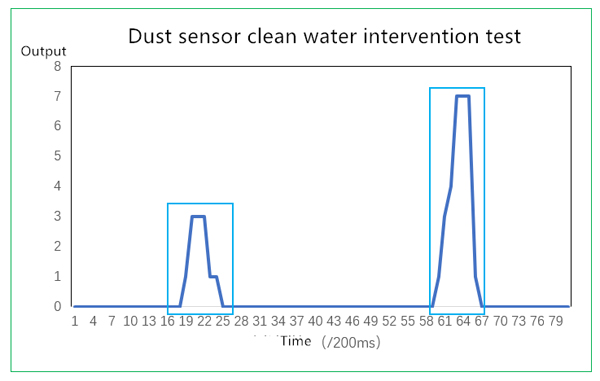
3. It is accurate in long-term use and is not affected by long-term dust accumulation. The Cubic dust sensor adopts an innovative lens protection design, combined with dynamic calibration technology, to ensure that the sensor can be used for a long time without affecting its measurement accuracy by dust accumulation.
4. Split structure design to meet various installation requirements. It adopts the split design of launch tube, receiver and main board, with small size and few cables, which is convenient for flexible wiring and installation in various complicated pipeline structures.

Installation Precautions:
·The installation position of the transmitter tube and receiver of the sensor should be designed at 180°
·To ensure the accuracy of the test, the distance between the transmitter tube and the receiver should not be too long (recommended to be less than 60mm)
·The optical reflection area should avoid external light
·The sensor installation area should avoid strong vibration
Cubic can provide customers with flexible dust sensor customization services based on the experience of supporting dust removal equipment. Welcome to call or email to consult related products and solutions.
Cubic Sensor and Instrument Co., Ltd is a high-tech enterprise specializing in R&D, production and sales of gas sensors and gas analysis instruments. Based on non-dispersive infrared (NDIR) technology, light scattering detection (LSD) technology, ultrasound (Ultrasonic) technology, ultraviolet differential absorption spectroscopy (UV-DOAS) technology, thermal conductivity (TCD) technology, laser Raman (LRD) technology, Cubic has launched many types of gas sensing platforms , formed two major industrial ecology: gas sensors and gas analysis instruments and developed dozens of different products which are widely used in home appliances, automobiles, medical, environmental protection, industry, energy measurement and other fields at home and abroad.
Cubic Sensor and Instrument Co., Ltd is the first batch of intellectual property demonstration construction enterprises in Hubei Province. It has established the Hubei Province Gas Analysis Instrumentation Engineering Technology Research Center and the Hubei Province Enterprise Technology Center. Cubic has undertaken the national major scientific instrument and equipment development special projects, the Ministry of Industry and Information Technology Internet of Things development special projects and other national technologies development project. In 2019 Cubic and its subsidiary Hubei Ruiyi are determined to be selected as a demonstration enterprise for the “one-stop” sensor industry application plan by the Ministry of Industry and Information Technology. Cubic won the "Most Influential IoT Sensor Enterprise Award" issued by China IoT Industry Application Alliance.
With long-term technology innovation, high product performance and international marketing vision, Cubic has obtained the recognition of many well-known domestic and foreign companies. Cubic gas sensors have obtained successful cooperation with global well-known brands such as Midea, Gree, Haier, Hisense, Xiaomi, Lake Electric, YuWell Medical, Philips, Daikin, Panasonic, FAW-Volkswagen, Valeo, Mahler, and Bosch, etc.
Cubic gas analysis instruments, based on the aforementioned core gas sensing technology, are widely used in various fields such as environmental monitoring, metallurgy, coal chemical industry, and biomass energy, and play an important role in energy saving and emission reduction. Cubic non-dispersive infrared gas sensors and portable infrared biogas analyzers, micro-fluid infrared flue gas analyzers, and infrared syngas analyzers have successively obtained national key new product certificates. Especially the infrared syngas analyzer won the Excellent Product Award of the Chinese Instrument and Meter Society, and its core technology won the Hubei Province Invention Patent Gold Award.